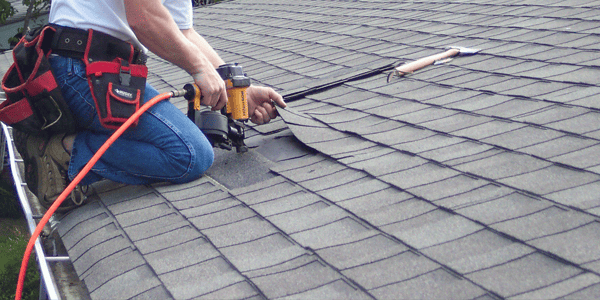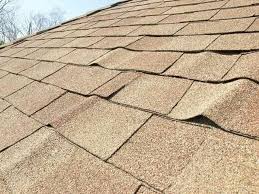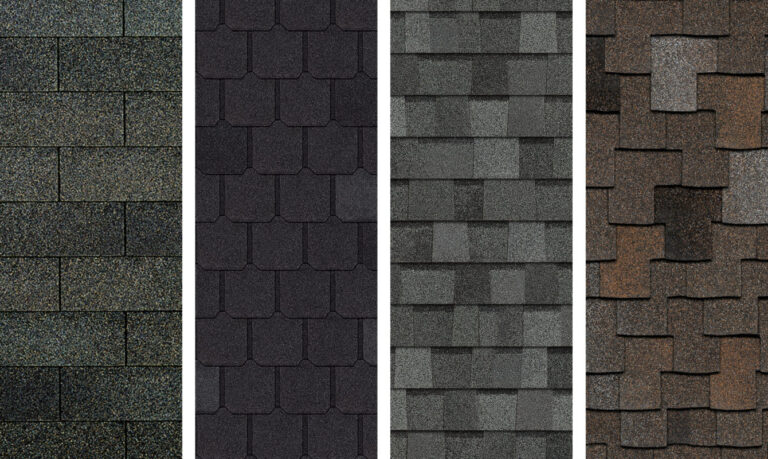Did you know that water damage is one of the most common and costly issues homeowners face? In fact, 98% of homes will experience some form of water damage during their lifetime (source). Whether it’s a leaking pipe, a roof leak, or a plumbing issue, water damage can wreak havoc on your home and your wallet. And one of the most visible signs of water damage is a damaged or water-stained ceiling.
A water-stained or damaged ceiling is unsightly and an indication of a larger problem. It can be a result of a leaking roof, a faulty plumbing system, or even an issue with your HVAC system. Understanding the signs of water damage on your ceiling and knowing how to repair it is crucial for homeowners to prevent further damage and maintain the integrity of their homes.
This article will discuss the common signs of water damage on your ceiling, how to detect them, and practical solutions for repairing and restoring your home. By the end of this article, you will have the knowledge and tools to identify water damage on your ceiling and take appropriate action to fix it.
1. Discoloration and Stains
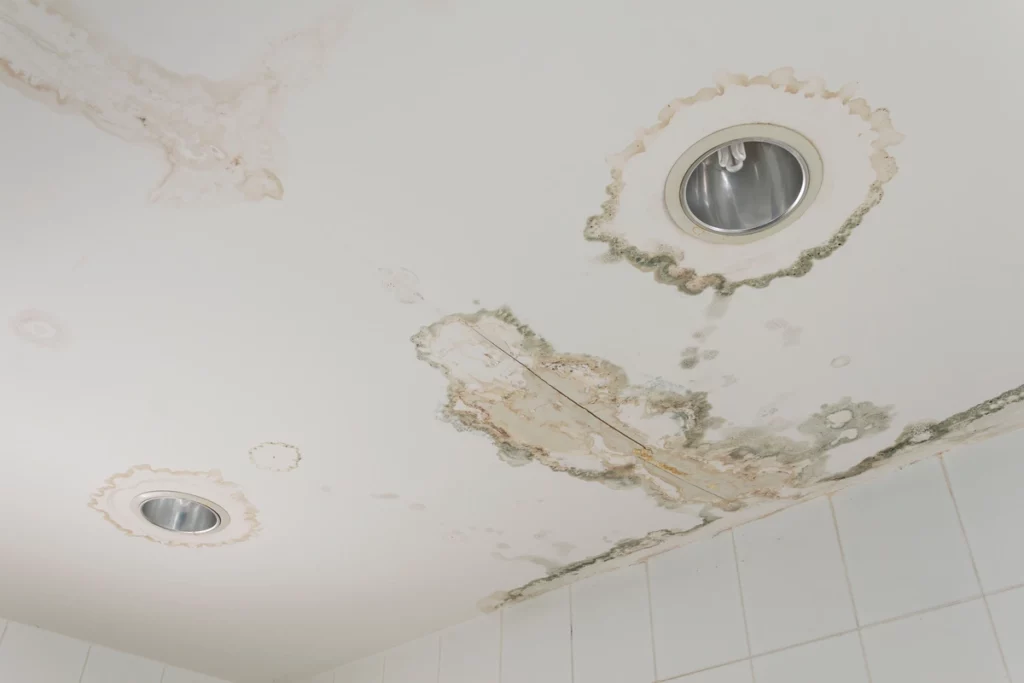
One of the most evident signs of water damage on your ceiling is discoloration. Water stains can appear as brown or yellowish patches on your ceiling, indicating water penetration and potential mold growth. These stains are typically irregular in shape and may spread over time if left untreated.
To detect water stains on your ceiling, carefully examine each room in your home, paying close attention to areas near windows, skylights, and plumbing fixtures. Look for any patches that appear darker or discolored compared to the rest of the ceiling. It’s important to note that these stains may not always be directly below the source of the water leak, as water can travel along pipes or beams before seeping through the ceiling.
If you notice any discoloration or stains on your ceiling, it’s crucial to take prompt action to address the underlying issue. Ignoring the problem can lead to further damage, compromised structural integrity, and even health risks from mold growth.
Water Damage Ceiling Repair in Steps
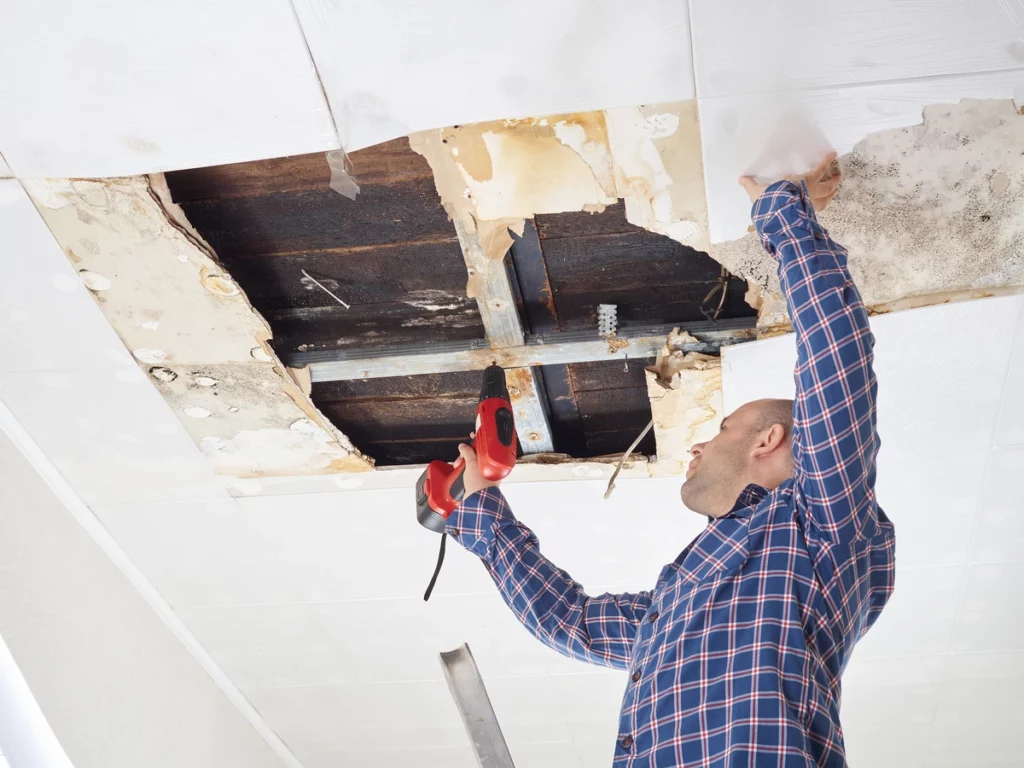
The first step in repairing water-damaged ceilings is to identify and fix the source of the water leak. This may involve inspecting your roof for missing or damaged shingles, checking your plumbing for leaks or burst pipes, or examining your HVAC system for condensation or moisture buildup. It’s important to address these issues as soon as possible to prevent further water damage and avoid costly repairs.
Once you have fixed the source of the water leak, you can then proceed with repairing the water-damaged ceiling. Start by removing loose or peeling paint and allowing the area to dry completely. If mold growth is present, it’s important to hire a professional mold removal company to ensure proper remediation.
After the area is dry and free of mold, you can then apply a stain-blocking primer to prevent any remaining stains from bleeding through the new paint. Finally, repaint the ceiling using high-quality paint that matches the rest of the room. This will not only restore the appearance of your ceiling but also provide a protective barrier against future water damage.
By addressing the discoloration and stains on your ceiling promptly and effectively, you can prevent further damage and ensure the long-term integrity of your home.
2. Sagging or Bulging Ceiling
Another clear sign of water damage on your ceiling is sagging or bulging. When water accumulates on the ceiling, it causes the materials to become saturated and weakened, leading to a sagging or bulging appearance. If left untreated, the ceiling may eventually collapse, posing a significant safety hazard.
Detecting sagging or bulging ceilings requires careful observation and a keen eye for detail. Inspect each room in your home, looking for any areas where the ceiling appears uneven, droopy, or swollen. Pay attention to corners or areas directly beneath bathrooms, kitchens, or spaces prone to water leaks. These are common areas where water can accumulate and weaken the ceiling structure.
If you notice any sagging or bulging, it’s essential to take immediate action to prevent further damage and ensure the safety of your home. Consult with a professional roofing contractor or a water damage restoration company to assess the extent of the damage and recommend the appropriate repairs. Promptly addressing the issue can save you time, money, and potential hazards in the long run.
3. Peeling or Bubbling Paint
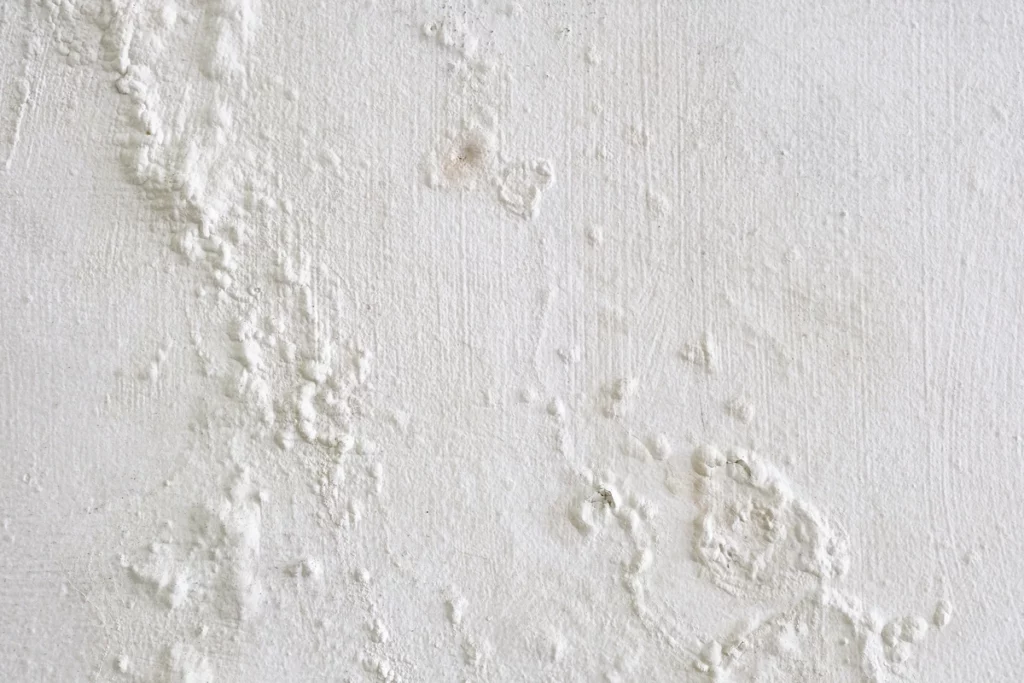
Peeling or bubbling paint on your ceiling is another visible sign of water damage. When water seeps into the ceiling materials, it can cause the paint to lose adhesion and peel or bubble. This phenomenon is often accompanied by discoloration or dampness in the affected area.
Inspect your ceilings for any areas where the paint appears to be peeling or bubbling. These areas are typically soft to the touch and may indicate that moisture is trapped beneath the paint surface. Keep in mind that water can travel horizontally along beams or pipes before reaching the ceiling, so peeling paint may not be directly below the source of the leak.
If you encounter peeling or bubbling paint on your ceiling, it’s crucial to address the underlying water issue and repair the damage. Start by identifying and fixing the source of the water leak to prevent further moisture infiltration. Once the area is dry, scrape off the loose paint, sand the surface, and apply a primer and fresh coat of paint to restore the appearance of your ceiling.
4. Mold Growth
Mold growth is not only unsightly but also a potential health hazard. When moisture accumulates on the ceiling, it creates an ideal breeding ground for mold spores to thrive. Mold can spread rapidly and negatively impact indoor air quality, leading to respiratory issues and allergies.
To detect mold growth on your ceiling, look for any fuzzy patches, black spots, or musty odors. Mold is most likely to occur in areas with prolonged water exposure, such as bathrooms, kitchens, or near leaking pipes or roofs. If you suspect mold growth, it’s essential to address the issue promptly to prevent further spread and protect the health of your household.
Removing mold from your ceiling requires professional expertise to ensure thorough remediation. Consult with a certified mold removal company to assess the extent of mold growth and develop a customized plan for effective removal and prevention. Keep in mind that simply painting over mold-infested areas will not solve the problem; proper remediation is essential to eliminate the spores completely.
Contact us today and resolve your water damage problem.
